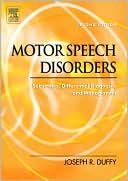Language Intervention Strategies in Aphasia and Related Neurogenic Communication Disorders
This thoroughly revised and updated Fifth Edition is the most comprehensive resource on aphasia and related neurogenic communication disorders from the most distinguished authorities of our time. This classic text has been used by graduate speech language pathology students for over 25 years, and continues to be the definitive resource across the speech sciences for aphasia.\ The book describes a wide range of intervention strategies including team treatment, group therapy, approaches for...
Search in google:
This thoroughly revised and updated Fifth Edition is the most comprehensive resource on aphasia and related neurogenic communication disorders from the most distinguished authorities of our time. This classic text has been used by graduate speech language pathology students for over 25 years, and continues to be the definitive resource across the speech sciences for aphasia.The book describes a wide range of intervention strategies including team treatment, group therapy, approaches for bilingual and culturally diverse clients, augmentative and alternative communication, and computer-assisted interventions. An important section addresses psychosocial/functional approaches to intervention. New to this edition are Activities for Discussion that encourage students to reflect on what they just read. Marie E. Byrne The third edition focuses primarily on treatment approaches and intervention strategies for adult aphasia. Also included are discussions of basic considerations in assessment of cerebrovascular accident, assessment of aphasia, assessment and remediation of related disorders, and professional issues of concern to the clinical aphasiologist. The purpose is ""to bring together significant thoughts on intervention and to stimulate further developments in the remediation of adult aphasic patients."" Intervention with adult aphasic patients is a challenging role for the speech-language pathologist. The information and thought-provoking discussion of issues will help the professional service provider meet that challenge. The book is most appropriate for graduate students in speech-language pathology and speech-language pathologists working with adult aphasic patients. Tables and illustrations within the text are helpful. References are current and relevant to issues and topics discussed. This book is an excellent resource for the graduate student in speech-language pathology as well as for the practicing clinician. It includes a broad range of topics within a very well structured organization. The contributors to this edited text are recognized experts within their areas. This third edition of this text offers revision of chapters appearing in earlier editions as well as new chapters. I would highly recommend this book.
Sect. I Basic Considerations 11 Introduction to Language Intervention Strategies in Adult Aphasia Brooke Hallowell Hallowell, Brooke Roberta Chapey Chapey, Roberta 32 Neural Basis of Language Disorders Hanna Damasio Damasio, Hanna 203 Medical Aspects of Stroke Rehabilitation Anthony G. Mlcoch Mlcoch, Anthony G. E. Jeffrey Metter Metter, E. Jeffrey 424 Assessment of Language Disorders in Adults Janet P. Patterson Patterson, Janet P. Roberta Chapey Chapey, Roberta 64Sect. II Principles of Language Intervention 1615 Research Principles for the Clinician Connie A. Tompkins Tompkins, Connie A. April Gibbs Scott Scott, April Gibbs Victoria L. Scharp Scharp, Victoria L. 1636 Aphasia Treatment: Recovery, Prognosis, and Clinical Effectiveness Leora R. Cherney Cherney, Leora R. Randall R. Robey Robey, Randall R. 1867 Delivering Language Intervention Services to Adults with Neurogenic Communication Disorders Brooke Hallowell Hallowell, Brooke Roberta Chapey Chapey, Roberta 2038 Teams and Partnerships in Aphasia Intervention Lee Ann C. Golper Golper, Lee Ann C. 2299 Issues in Assessment and Treatment for Bilingual and Culturally Diverse Patients Patricia M. Roberts Roberts, Patricia M. 245Sect. III Psychosocial/Functional Approaches to Intervention: Focus on Improving Ability to Perform Communication Activities of Daily Living 27710 Life-Participation Approach to Aphasia: A Statement of Values for the Future Roberta Chapey Chapey, Roberta Judith F. Duchan Duchan, Judith F. Roberta J. Elman Elman, Roberta J. Linda J. Garcia Garcia, Linda J. Aura Kagan Kagan, Aura Jon G. Lyon Lyon, Jon G. Nina Simmons-Mackie Simmons-Mackie, Nina 27911 Social Approachesto Aphasia Intervention Nina Simmons-Mackie Simmons-Mackie, Nina 29012 Environmental Approach to Adult Aphasia Rosemary Lubinski Lubinski, Rosemary 31913 Focusing on the Consequences of Aphasia: Helping Individuals Get What They Need Linda J. Garcia Garcia, Linda J. 34914 Group Therapy for Aphasia: Theoretical and Practical Considerations Kevin P. Kearns Kearns, Kevin P. Roberta J. Elman Elman, Roberta J. 376Sect. IV Traditional Approaches to Language Intervention 401A Stimulation Approaches15 Schuell's Stimulation Approach to Rehabilitation Carl A. Coelho Coelho, Carl A. Michele P. Sinotte Sinotte, Michele P. Joseph R. Duffy Duffy, Joseph R. 40316 Thematic Language-Stimulation Therapy Shirley Morganstein Morganstein, Shirley Marilyn Certner-Smith Certner-Smith, Marilyn 45017 Cognitive Stimulation: Stimulation of Recognition/Comprehension, Memory, and Convergent, Divergent, and Evaluative Thinking Roberta Chapey Chapey, Roberta 46918 Early Management of Wernicke's Aphasia: A Context-Based Approach Robert C. Marshall Marshall, Robert C. 50719 Rehabilitation of Subcortical Aphasia Stephen E. Nadeau Nadeau, Stephen E. Leslie J. Gonzalez Rothi Rothi, Leslie J. Gonzalez 53020 Primary Progressive Aphasia and Apraxia of Speech Joseph R. Duffy Duffy, Joseph R. Malcolm R. McNeil McNeil, Malcolm R. 54321 Global Aphasia: Indentification and Management Richard K. Peach Peach, Richard K. 565B Cognitive Neuropsychological Approaches to Treatment of Language Disorders22 Cognitive Neuropsychological Approaches to Treatment of Language Disorders: Introduction Argye E. Hillis Hillis, Argye E. Melissa Newhart Newhart, Melissa 59523 Impairments of Word Comprehension and Production Anastasia M. Raymer Raymer, Anastasia M. Leslie J. Gonzalez Rothi Rothi, Leslie J. Gonzalez 60724 Comprehension and Production of Sentences Charlotte C. Mitchum Mitchum, Charlotte C. Rita Sloan Berndt Berndt, Rita Sloan 63225 Comprehension and Production of Written Words Pelagia M. Beeson Beeson, Pelagia M. Maya L. Henry Henry, Maya L. 654C Cognitive Neurolinguistic Approaches to the Treatment of Language Disorders26 Language Rehabilitation from a Neural Perspective Stephen E. Nadeau Nadeau, Stephen E. Leslie J. Gonzalez Rothi Rothi, Leslie J. Gonzalez Jay Rosenbek Rosenbek, Jay 68927 Treatment of Syntactic and Morphologic Deficits in Agrammatic Aphasia: Treatment of Underlying Forms Cynthia K. Thompson Thompson, Cynthia K. 73528 Language-Oriented Treatment: A Psycholinguistic Approach to Aphasia Donna L. Bandur Bandur, Donna L. Cynthia M. Shewan Shewan, Cynthia M. 75629 Treatment of Aphasia Subsequent to the Porch Index of Communicative Ability (PICA) Bruce E. Porch Porch, Bruce E. 800D Specialized Interventions for Patients With Aphasia30 Communication-Based Interventions: Augmented and Alternative Communication for People with Aphasia Karen Hux Hux, Karen Kristy Weissling Weissling, Kristy Sarah Wallace Wallace, Sarah 81431 Melodic Intonation Therapy Robert W. Sparks Sparks, Robert W. 83732 Computer Applications in Aphasia Treatment Richard C. Katz Katz, Richard C. 852Sect. V Therapy for Associated Neuropathologies of Speech- And Language-Related Functions 87733 Communication Disorders Associated with Traumatic Brain Injury Mark Ylvisaker Ylvisaker, Mark Shirley F. Szekeres Szekeres, Shirley F. Timothy Feeney Feeney, Timothy 87934 Communication Disorders Associated with Right-Hemisphere Damage Penelope S. Myers Myers, Penelope S. Margaret Lehman Blake Blake, Margaret Lehman 96335 Management of Neurogenic Communication Disorders Associated with Dementia Tammy Hopper Hopper, Tammy Kathryn A. Bayles Bayles, Kathryn A. 98836 The Nature and Management of Neuromotor Speech Disorders Accompanying Aphasia Julie Wambaugh Wambaugh, Julie Linda Shuster Shuster, Linda 1009Author Index 1043Subject Index 1073
\ From The CriticsReviewer: Aimee R Dietz, Ph.D.(University of Cincinnati College of Allied Health Sciences)\ Description: An improvement in this edition of a compilation of both the history and the future of aphasia interventions is the increased support for the notion that aphasia is cognitively based. Additionally, this book provides the foundation for clinicians to learn about restorative and compensatory intervention approaches for people with aphasia and related disorders.\ Purpose: "The purpose of the fifth edition is to bring together significant thoughts on intervention and to stimulate further developments in the remediation of adults with aphasia," according to the editor. She has successfully assimilated current research and continued development of intervention and assessment tools in the field of aphasia, traumatic brain injury (TBI), dementia, and right-hemisphere syndrome.\ Audience: Clinicians of all levels are the target audience. The standalone chapters could be successfully used independently depending on the purpose of a class or a clinician's caseload. The editor and the contributing authors are respected aphasiology researchers and clinicians at heart.\ Features: "This book can serve as a guide to clinicians when planning the assessment of and intervention for people with aphasia, TBI, right hemisphere syndrome, and dementia. It helps readers to provide services that are embedded in a social construct regardless of the type of intervention (i.e., restorative, compensatory/augmentative and alternative communication (AAC), or combined). Some of the unique features include a description and examples of diagnostic and treatment SOAP notes and incorporation of Blackstone & Berg's Social Networks (2003) into the assessment chapter. The chapter on communication-based interventions also provides an up-to-date summary of the current state of the science of AAC and aphasia and offers ideas to help clinicians understand how restoration and compensation/AAC interventions can be jointly implemented from day one. An inconsistency that occurs throughout the book is the failure to provide current references in some instances. In some chapters, authors provide few, if any, updated references from the previous edition published in 2001. (It should be noted, however, that some chapters discuss important, historically based interventions that have not been extensively researched in recent years, such as Schuell's stimulation approach to rehabilitation.) In other chapters, authors have not updated incidence and prevalence numbers from the previous edition, while other authors have not updated references to include new treatment approaches that are now available. "\ Assessment: However, this fifth edition is the most comprehensive book available for clinicians of all levels seeking assessment and intervention ideas for people with aphasia and related disorders.\ \ \ \ \ Marie E. ByrneThe third edition focuses primarily on treatment approaches and intervention strategies for adult aphasia. Also included are discussions of basic considerations in assessment of cerebrovascular accident, assessment of aphasia, assessment and remediation of related disorders, and professional issues of concern to the clinical aphasiologist. The purpose is ""to bring together significant thoughts on intervention and to stimulate further developments in the remediation of adult aphasic patients."" Intervention with adult aphasic patients is a challenging role for the speech-language pathologist. The information and thought-provoking discussion of issues will help the professional service provider meet that challenge. The book is most appropriate for graduate students in speech-language pathology and speech-language pathologists working with adult aphasic patients. Tables and illustrations within the text are helpful. References are current and relevant to issues and topics discussed. This book is an excellent resource for the graduate student in speech-language pathology as well as for the practicing clinician. It includes a broad range of topics within a very well structured organization. The contributors to this edited text are recognized experts within their areas. This third edition of this text offers revision of chapters appearing in earlier editions as well as new chapters. I would highly recommend this book.\ \ \ BooknewsNew edition of a resource that brings together significant thoughts on the remediation of adult aphasic patients. Chapey (speech communication arts and sciences, Brooklyn College) presents 36 contributions that discuss basic considerations such as the incident of stroke and aphasia, the role of the aphasiologist, the neural basis of language assessment and intervention, and the assessment of language and communication; principles of language intervention; psychosocial and functional issues; traditional approaches to intervention; and remediation of disorders that frequently accompany or are related to or confused with aphasia (traumatic brain injury, right hemisphere damage, dementia, aphaxia, and dysarthria). Annotation c. Book News, Inc., Portland, OR (booknews.com)\ \ \ \ \ 5 Stars! from Doody\ \
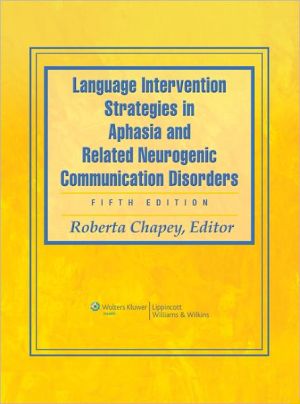
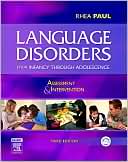

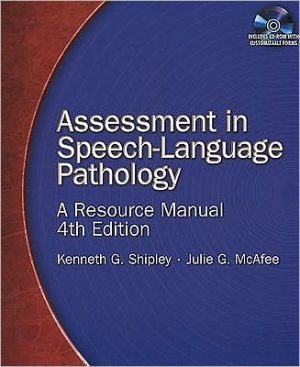
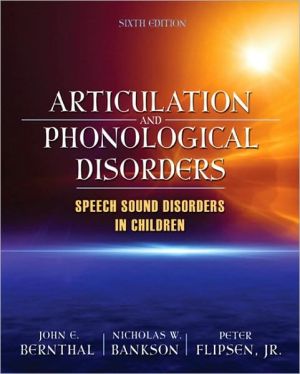
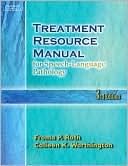
![Introduction to Audiology [With CDROM] Introduction to Audiology [With CDROM]](/application/data/covers/31/18/9780205593118.jpg)
